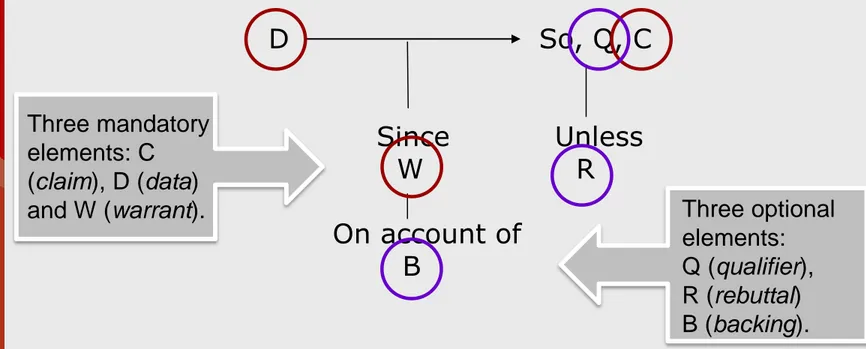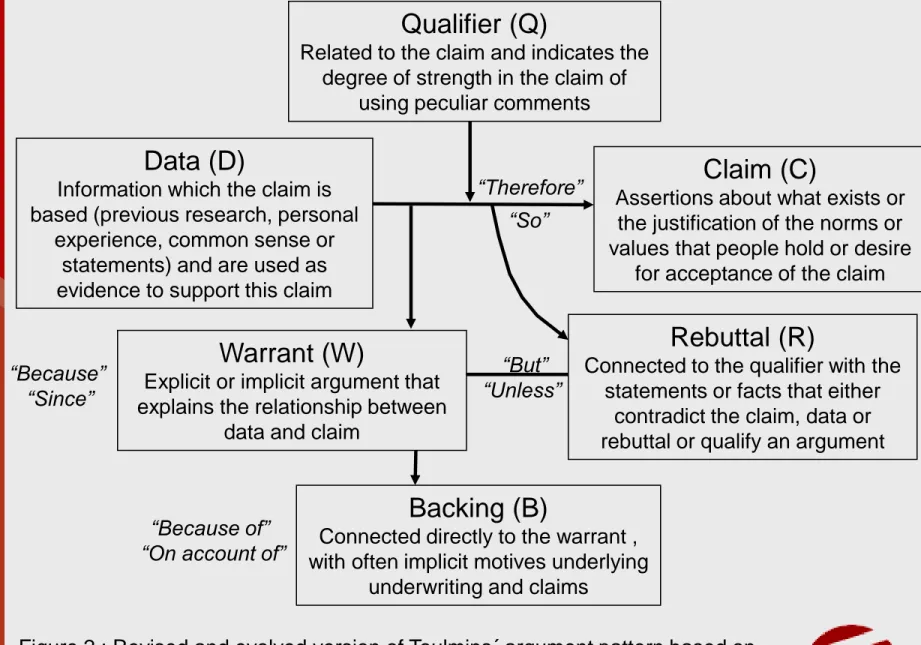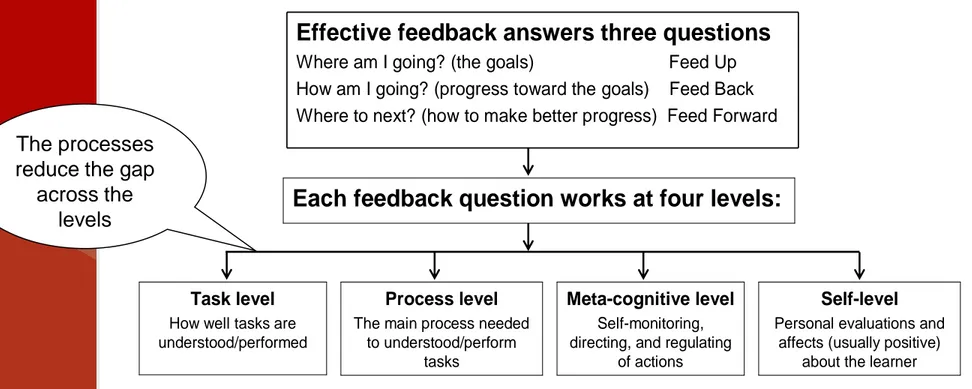Design of Collaborative Peer Feedback with
Self-assessment for Online Learning
Lisbeth Amhag
Lecturer, Ph.D. & postdoc. in Pedagogy Faculty of Education and Society
Malmö University, SWEDEN
Designs for Learning
25 – 27 april, Aalborg University, Copenhagen
Conference website:
http://designsforlearning2012.aau.dk/
Design of Collaborative Peer Feedback with
Self-assessment for Online Learning
This study focuses on how online course outlines can be designed to improve the impact and added value of collaborative peer feedback with self-assessment in distance education. My purpose is that these processes foster meta-reflection on the quality of their assignments and the input of others, and develop awareness of
effective and qualitative contributions to the discussions.
The research question in the study is:
What impact and added value can be identified in the students
Keywords
Peer feedback uses as a dimension of students' appreciations with aspects of each one’s understandings; as well alternative strategies and solutions
based on literature to promote the ability to give and receive feedback (Topping, 1998; Dochy et al., 1999).
Self-assessment is as a way to help students to improve their attention on the meta-cognitive aspects of their learning when they monitor their own
assignments and online peer feedback and compare to other fellow students. Peer feedback has been used as an intermediate step for
self-assessment; therefore students can evaluate and compare their
contributions with others. It could be one way to identify strengths and weaknesses in their work and helping their critical ability to reflect, assess, evaluate, plan and take responsibility for their own learning.
Method
Data was collected from the 22 student teachers’ (women=15, men=7) peer feedback with self-assessment processes with one assignment in each university course online, which was given as part of the first two consecutive 15 credit web-based courses in Teacher Education, 90 credits, called Teacher Assignment and Learning and Development. In the start of the first course the students had worked with
assessment exercises (Adams & King, 1995) how to provide peer feedback in their groups with own criteria supported by Dysthe et al. (2011) as follows: as they read each other’s assignments they should start with capturing text focus or purpose, then indicate interesting or unclear summary, and finally formulate briefly in their own words what they consider most important, ask
questions or explanations and clarifications or suggest
alternative solutions and/or advice and discuss problems on the basis of literature and theories.
The students were also asked to start and end with something positive and not critically examine how well the cases of others were presented or evaluate them in a personal way.
Implementation
The study focuses the second course assignment in course 1, where the students worked both individually and collaboratively with cases of teacher leadership, one official case and one from each student. In course 2, the students worked both individually and collaboratively with own cases of
bilingualism and second language learning.
Groups with 5-7 students
In both studies the students were divided into the same six groups, with five to seven individuals in each. Each group included both men and women. The students first submitted their own particular contribution to the assignments (LMS, It´s learning). Afterwards, they had to give
collaborative peer feedback in their groups over a period of a week and after this activity self-assess the quality of their own peer feedback in course 1 and in course 2 both self-assess their own learning and the quality of their own and others peer feedback with didactic proposals.
6
Analysis peer feedback
Home
The analysis was conducted in two-phase analysis. The first two-phase
involved discovering and identifying the students' meaning content in the
collaborative peer feedback online by Toulmin’s argument pattern (1958). TAP is based on practical relationships or approaches that refer to cognitive knowledge processes as thinking, problem solving, concept formation, perception, attention, memory and reflection.
Data N=155
Toulmin (1958, pp. 98, 101, 103) describes how writers and readers can deal with texts, and how they can use the resources of texts to determine what they mean – or rather, some possible meanings – and how it can be achieved with an argument model containing six elements.
Toulmin´s argument pattern (TAP)
Figure 1. Summary of Toulmin’s argument pattern (Toulmin, 1958, p. 104)
D So, Q, C Since Unless W R On account of B Three mandatory elements: C (claim), D (data)
and W (warrant). Three optional
elements: Q (qualifier), R (rebuttal) B (backing).
Home
Data (D)
Information which the claim is based (previous research, personal
experience, common sense or statements) and are used as evidence to support this claim
Qualifier (Q)
Related to the claim and indicates the degree of strength in the claim of
using peculiar comments
Claim (C)
Assertions about what exists or the justification of the norms or values that people hold or desire
for acceptance of the claim
Backing (B)
Connected directly to the warrant , with often implicit motives underlying
underwriting and claims
Rebuttal (R)
Connected to the qualifier with the statements or facts that either
contradict the claim, data or rebuttal or qualify an argument
Warrant (W)
Explicit or implicit argument that explains the relationship between
data and claim
“But” “Unless” “Therefore” “So” “Because” “Since” “Because of” “On account of”
Figure 2 : Revised and evolved version of Toulmins´ argument pattern based on Toulmin, 1958; Kneupper, 1978; Simon, Erduran & Osborne, 2006
Result peer feedback analysis
Level of elements Course 1 Course 2 Total
CD, CW, CR, DR, WB 1 (1 %) 0 1 (1 %)
CDW, CDR, CDQ, CWR, DWB 33 (37 %) 23 (35 %) 56 (36 %)
CDWB, CDWQ, CDWR, CDWRB 55 (62 %) 43 (65 %) 98 (63 %)
Total 89 (100 %) 66 (100 %) 155 (100 %)
Note: C, claim; D, data; W, warrant; B, backing; Q, qualifier; R, rebuttal
The result in the first analysis showed, that the students principally presented their ideas in an understandable and coherent manner, based on these data and claims of the original opinions. Two-thirds of the contributions (63 %)
contained all three of Toulmin’s mandatory elements (C, D, W); combined with one or two of the optional elements (Q, R, B). 36 % contained three of the mandatory or optional elements and only 1 % contained two of them.
The result is comparable to my previous study (Amhag, 2011) where also two-thirds of the contributions (64 %) contained all three of Toulmin’s mandatory elements, but there is a difference between the contents of
two (21 %) or three of the mandatory or optional elements (15 %). Table 1. Levels in the 22 students' collaborative peer feedback online (N=155).
10
Analysis peer processes
Home
In the second phase of analysis and interpretation of the 22 students' peer processes (peer feedback, N=155 with self-assessments, N=44), was Hattie and Timperley´s (2007) four levels of three effective feedback questions used:
1. Where am I going? (What are the goals?)
2. How am I going? (What progress is being made toward the goal?)
3. Where to next? (What activities need to be undertaken to make better
progress?)
Figure 3: Revised version of Hattie and Timperleys model (2007, p. 87).
Effective feedback answers three questions
Where am I going? (the goals) Feed Up How am I going? (progress toward the goals) Feed Back Where to next? (how to make better progress) Feed Forward
Each feedback question works at four levels:
Task level
How well tasks are understood/performed
Process level
The main process needed to understood/perform
tasks
Meta-cognitive level
Self-monitoring, directing, and regulating
of actions
Self-level
Personal evaluations and affects (usually positive)
about the learner
Hattie and Timperleys model
The questions correspond to the design of feed up, feed back and feed
forward and are closing the gap between where the students are and
where they are aiming to be. I was studying the distinction between feedback about the task (FT), about the processing of the task (FP), about the meta-cognitive level with self-regulated actions (FR), and/or about the self as a person (FS).
The processes reduce the gap
across the levels Excerpt FT Excerpt FP Excerpt FR Excerpt FS
Excerpt feedback of the task level (FT)
Home
Laura! (peer feedback from fellow student Sarah)
You must as a teacher be careful with the position of power you have over the pupils. In your case, the teacher also brought a group of children with her on her side because they promised to be a witness to the situation which the boy was accused of. She puts the boy for “more-against-one" situation. That the boy has his classmates around him and may find it difficult to be himself is violating him even more […].
In this case, there has been an unfair treatment of the boy and gives an example of abusive treatment. You should also be careful of the student's intrinsic value (Erdis 2007, p.98). The teacher also makes errors when she discloses information to others who may contribute to contempt, as in this case, among all his classmates. She is pointing out the reprehensibility of the pupil, which is a crime (Erdis 2007, p.99). It is contrary to the Education Law paragraphs that a teacher offends a pupil (Erdis 2007, p.109). FT knowledge of result FT statements Toulmin Hattie & Timperley Claim Data Qualifier therefore Warrant because Backing because of Rebuttal but
Level of peer process FT, feedback of the task level
how well a task is done or performed
corrective feedback or knowledge of results
statements and reproductions from other
lack of own reflections on learning
Warrant
since
FT
Excerpt feedback of the process level (FP)
Sarah: I described in my statement of didactic proposal, that the
pupils with Swedish as a second language would be able to read Swedish literature in their native language. Of course, I agree with you all (three fellow students) that it is important that the pupils read literature for the most part in Swedish since the purpose of literature reading is on the Swedish language. However, I believe that the pupils could take part of literature in their native language as the purpose of fiction is to gain a deeper understanding of how people have lived and thought in different cultures at different times (www.Skolverket.se). The writing itself is important for all pupils, I completely agree with that. But I do believe that teachers can create various opportunities for them where there is more or less appropriate to write. If you have pupils in the class with
Swedish as a second language, I maintain that it may be too
difficult for them to focus on both languages about what is said and what should be written (Lindberg, 2005, 2011, p. 339). It is
important to get the same opportunities for all pupils and not exclude anyone. There are so many other situations where the writing comes in focus, especially in the design of teaching that teachers use today.
FP rel. data &
claims FP text focus Toulmin Hattie & Timperley FP alt. solutions FP further discussion Claim Data Qualifier therefore Backing because of Warrant since Rebuttal but
Level of peer process FP, feedback of the process level
capturing the text focus or purpose
Excerpt feedback of the meta-cognitive level (FR)
Home
Hannah: Overall, I think we have covered a fairly wide range of
different leadership problems, though far from all. It has been interesting and instructive to take note of everyone's opinions and at the same time being able to see that we do not have an identical picture of how the school will conduct its leadership.
Literature wise, I have based much of my thinking on the schools equality plans on the basis of Children and Pupil Safety Law (SFS 2006:67) and discrimination legislation (SFS 2008:567). It seems to me that more are thinking as I, even if I realize that I have not been as active as many of the other in the source reference to these. […] The hard questions for me are not so much what is wrong but how teachers can bring all students together. Where is it wrong? Is it a social problem or is it the individual schools, individual principals or groups of teachers? Do we not open our eyes and see that schools need to work systematically and with prolonged equal plans in
order to change attitudes and generate empathic students? FR thoughts & reflections FR evaluating FR self-efficacy Claim Data Qualifier therefore Backing because of Rebuttal though
Level of peer process FR, feedback of the meta-cognitive level with self-regulated aspects
create internal feedback, thoughts and reflections
seeking and dealing with peer feedback information
evaluate their levels of understanding and strategies
feelings of self-efficacy Warrant since Toulmin Hattie & Timperley FR seeking & dealing
Excerpt feedback of the self-level (FS)
Eric: Common to the described cases on violations, has been that
there are no concrete action plan for the measures to be deployed and when. It has largely been a matter of a few targeted initiatives and they have also failed to follow up. More prevention efforts are also missing in which both pupils and their parents are involved. For example, to develop common rules for how pupils shall behave towards each other and to use group work which seeks to teach pupils to socialize with each other.
Maria: I think the group's didactic, alternative proposals are
consistent with my own didactic proposals on my observation of the pupil Sana. The didactic proposals and measures that the group mentioned, I have raised myself, reflect and analyzed in my own didactic proposals. Therefore, I feel I have nothing more to add in this section. Toulmin Hattie & Timperley FS little task-related FS rarely engagement FS rarely critical ability
Level of peer process FS, feedback self as a person
contains little task-related information
rarely converted into more engagement in learning
rarely improving personal evaluation and critical ability FS rarely critical ability Claim Qualifier therefore Rebuttal unless Claim Backing therefore
Home
A summary of the peer processes
Figure 4: Summary of the four levels of peer processes online (N=199). Level of peer processes
FT, feedback of the task level
how well a task is done or performed
corrective feedback or knowledge of results
statements and reproductions from other
lack of own reflections on learning FP, feedback of the process
level
capturing the text focus or purpose
information about relations of data and claims
suggestions of alternative solutions
discuss problems on the basis of literature FR, feedback of the
meta-cognitive level with self-regulated aspects
create internal feedback, thoughts and reflections
seeking and dealing with peer feedback information
evaluate their levels of understanding and strategies
feelings of self-efficacy FS, feedback self as a
person
contains little task-related information
rarely converted into more engagement in learning
Research contributions
The results of the studies show that the combination of what students do together with the tasks assigned to them ascollaborators; and the roles and
responsibilities the students assume as collaborators; and the interactive structure underlying the activity in their peer feedback with self-assessment; offer the potential to develop and expand the space of learning and understanding in an online context. However, in course 1, half of the students (50 %) skipped the
self-assessment of own peer feedback. Perhaps they were unsure of how they would self-assess them or how to evaluate their levels of understanding and strategies and/or feelings of self-efficacy (the belief in one’s own ability to perform course/education activities successfully).
In course 2 the majority of the students (82 %) had self-assessed others peer feedback with didactic proposals and compared them with their own proposals, but there are a lack of own reflections and a lot of
reproductions. The students had difficulty in identifying strengths and weaknesses in their work and developing their critical ability
Online implication
Home
This use of self-assessment with concrete suggestions can lead to more reflections on one’s own work and promote their critical ability, but there is a need of
self-assessment exercises and setting own criteria; as in the design of peer feedback. These peer processes are conducive for students to make judgement about their own learning outcome and to consider the characteristics of competent work and how to apply these criteria on their own work (Adams & King, 1995; Dochy et al., 1999). The implications for educational practice online is that the accuracy of the self-assessment can improves over time with own criteria and that the feelings of self-efficacy are important mediators in all feedback situations (Hattie & Timperley, 2007).
Thank you for your attention!
Lisbeth Amhag
Lisbeth.Amhag@mah.se Faculty of Education and Society


